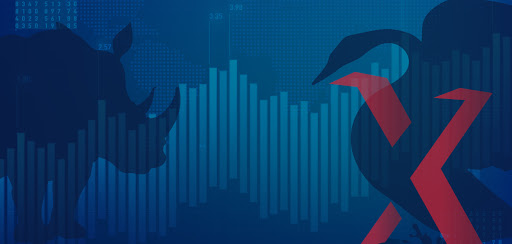Markets have been on the rampage riding on the back of Monetary and Fiscal Stimulus. While the fear of missing out has ensured most investors sitting on the fences truly jump into the playing field, experienced investors will tell you that “we normally overestimate what we can achieve in the short term and under-estimate what we can achieve in the long term”.
Ironically, it is the ‘Robin Hoods’ (aka retail investors) who have made truckloads, riding the short-term momentum. Meanwhile, experienced portfolio managers have been left far behind.
Sooner or later when the dust settles, the focus will be back on earnings, business model, and all the other mundane chores, which the new age ‘Robin Hood’ investors cannot care less about.
We have been hearing about the ‘New Normal’ and how the current valuations are justified, mainly because of low yields in the fixed income space, which in turn means a bump up in the current value of future cash flows from companies as they are discounted by low interest rates. With the earnings season in full swing, this is probably as good a time as any to try and inject some method to the madness.
The forward 12-month P/E ratio for the S&P 500 is 22.5. This P/E ratio is significantly higher than both the 5-year average (17.6) and the 10-year average (15.7).
Earnings analysis on the index level does not reveal the true picture unless we dig deeper into the underlying sectors.
Financials, Materials, and Health Care are amongst the key sectors reporting a year-on-year earnings growth, while Energy, Industrials, and Consumer discretionary are the sectors reporting a year-on-year decline in earnings.
Most of the earnings so far have exceeded expectations but the price action post results have been tepid. With the bar set high, follow through rallies on the back of results may be difficult to come.
The forward P/E analysis throws up interesting insights when done sector-wise:
| FWD P/E | 5-Yr Avg | 10-Yr Avg | |
| S&P 500 | 22.5 | 17.6 | 15.7 |
| Consumer Discretionary | 37.7 | 22.6 | 19.4 |
| Energy | 28.3 | 13.9 | 14.4 |
| Information Technology | 28.1 | 19.2 | 16.3 |
| Industrials | 24.1 | 17.9 | 16.1 |
| Communication Services | 23.4 | 15.6 | 15.4 |
| Materials | 21.3 | 17.4 | 15.3 |
| Consumer Staples | 20.0 | 19.4 | 18.0 |
| Utilities | 18.7 | 17.8 | 16.3 |
| Healthcare | 17.0 | 15.6 | 14.9 |
| Financials | 14.4 | 13.0 | 12.4 |

Consumer discretionary and Energy are trading at forward PEs way ahead of their historical averages. It is not difficult to see why it is like that, these have been the hardest hit and are likely to bounce back strongly with all the pent-up demand. The Hotels, Restaurants, & Leisure industry is the largest contributor to the year-over-year decline for Consumer discretionary and it is logical to expect this sector to zoom once the vaccination is done for much of the population.
The airline industry is the largest contributor to the year-over-year decline in earnings for the Energy sector. However, people are eager to go out of their homes and flights may not be such a dreaded place in the second half of 2021.
Financials, Healthcare, Utilities, and Consumer Staples are trading close to their historical averages and there is no bubble or froth here.
Materials also seem to be fairly valued considering that the commodity cycle is turning. The Metals & Mining industry is projected to be the largest contributor to year-over-year earnings growth for this sector.
Information Technology is an interesting one. Notably, it was one of the biggest beneficiaries of the stay-at-home play, despite a strong run-up it is trading at valuations way ahead of its historical averages. High growth technology plays look richly valued.





